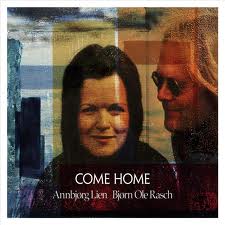Related Research Articles

Ole-Johan Dahl was a Norwegian computer scientist. Dahl was a professor of computer science at the University of Oslo and is considered to be one of the fathers of Simula and object-oriented programming along with Kristen Nygaard.

Øystein Olaf Sunde is a Norwegian folk singer and guitarist. He is known for his high-speed guitar and banjo style and his satirical lyrics. Although often regarded as a comedian, Sunde is a versatile guitarist who has played with several Dixieland bands and jazz combos over the years.

Finn Bjørn Kalvik is a Norwegian singer and composer.

Ole Christian Paus was a Norwegian singer, songwriter, poet and author, who was widely regarded as the foremost troubadour of the contemporary Norwegian ballad tradition.

Annbjørg Lien is a Norwegian musician, playing the hardingfele, violin, and nyckelharpa.

Kari Bremnes is a Norwegian singer and songwriter.

Lillebjørn Falk Nilsen was a Norwegian singer-songwriter and folk musician. He was born in Oslo, and was considered by some to be the leading "voice of Oslo", thanks to numerous classic songs about the city from the 1970s and onwards.
Events in the year 1947 in Norway.
Events in the year 1898 in Norway.
Ole Mørk Sandvik was a Norwegian educator, musicologist and folk-song collector.
Norwegian Folk Music Research Association is a folk music society based in Trondheim, Norway.
The Gammleng Award is a Norwegian culture award created by The Fund for Performing Artists in 1982, 25 years after the fund was established in 1957. The award's official name is the Rolf Gammleng award to performing artists. It's awarded to artists who have in a meritorious way contributed on recordings, stage performances, or concerts.
Berit Opheim Versto is a Norwegian singer, known for her interpretations of folk music.

Bendik Hofseth is a Norwegian jazz musician, who plays the saxophone and sings. He is also a bandleader, and arranges and composes music.

Alf Cranner was a major Norwegian folk singer, lyricist and painter, considered by many to be the pioneer of the Norwegian folk music wave of the 1960s. The citation for the award of Evert Taube Memorial Fund Grant 1994, to Cranner states: «Å, den som var en løvetann with lyrics by another great Norwegian folk singer and lyricist Alf Prøysen (1914–1970), Bare skrap and Den skamløse gamle damen with lyrics by Klaus Hagerup and Sjømannsvise with the text of Harald Sverdrup. Among Cranner folk songs with his own lyrics is Båt til lyst and Hambo i fellesferien two of the best known. The folk song Din tanke er fri, is Cranner translation of the German Die Gedanken sind frei.

Børge-Are Halvorsen is a Norwegian Jazz musician. His family moved to Sandane in Gloppen where he spent his youth, but he was later a freelance musician resident of Oslo since 2003.

Steinar Ofsdal is a Norwegian composer and flutist.
Ditlef Eckhoff is a Norwegian jazz musician (trumpet) known from numerous recordings and central on the Oslo Jazz Scene.

Jens Petter Antonsen is a Norwegian musician (trumpet), known studio musician from a large number of recordings and television shows. He is the son of bandleader Odd R. Antonsen, and brother of musicians Ole Edvard and Tom Erik Antonsen.

Kalvøyafestivalen was a Norwegian music festival arranged at Kalvøya in Bærum nearby Oslo, Norway. The festival was initiated by people connected to the folk club Hades at the art center on Høvikodden. The festival was started by Sten Randers Fredriksen in 1971. The festival was officially closed in 1998.
References
- 1 2 Norsk kunstnerleksikon: Ole Hauki. (In Norwegian)
- 1 2 Aftenposten, March 12, 1966.
- ↑ Dryss av røykfripriser på røykfri dag. 2004. Stavanger Aftenblad (June 2).
- ↑ Kalvik, Finn. 2012. Inger Hagerup – Min åndelige mor. November 17.
- ↑ Markussen, Hakan. 2009. American Folk Music på Dolphins Club 1966–1970. Oslo: University of Oslo, p. 72.
- ↑ Bing, Morten. 2015. A Folkrocker's Guide to the Universe • 1965–1975. Viser/Visor 1.